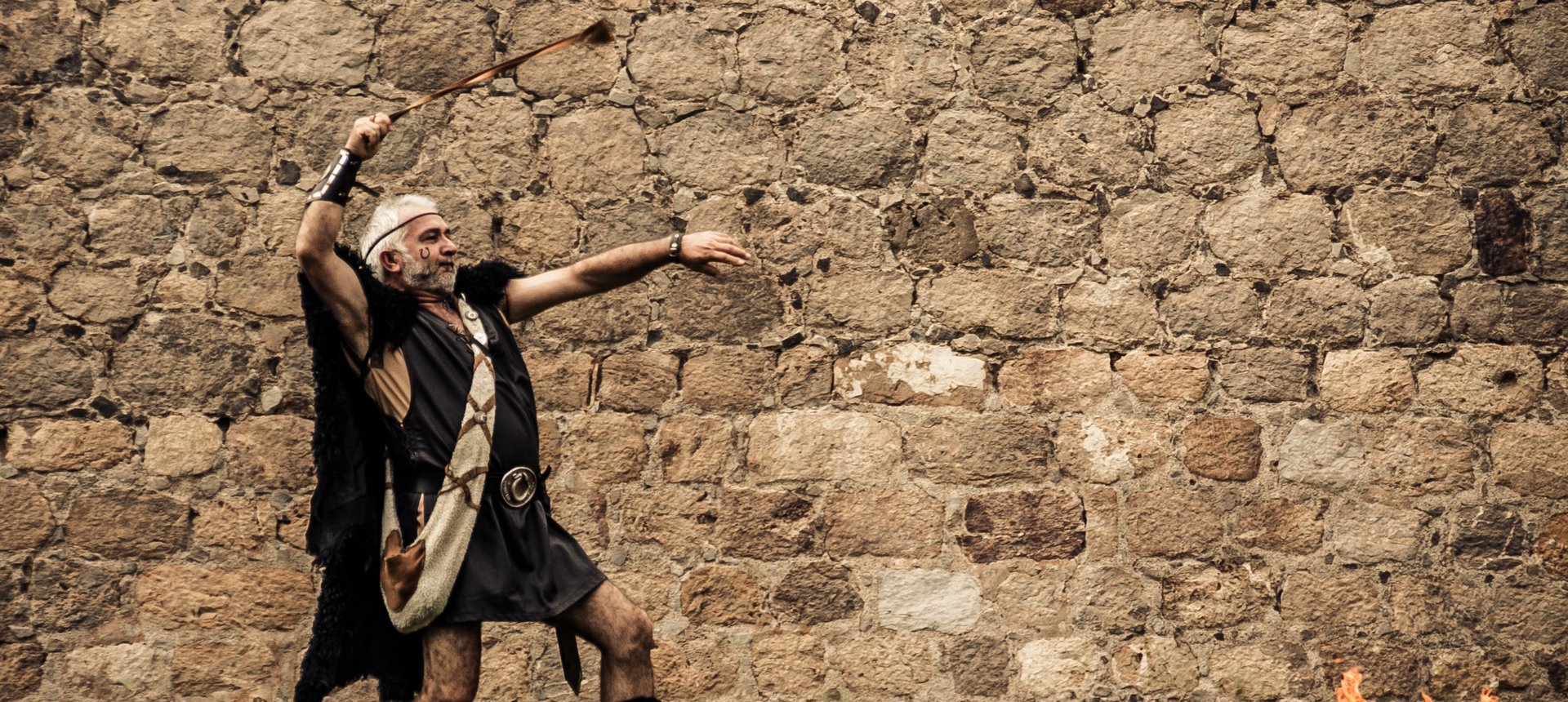What is a biblical…
sling and how was it used?
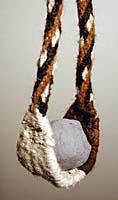
Slings and stones are mentioned in various Old Testament books. The Bible indicates that these were important and deadly military weapons. What does the Bible tell us? Has modern archaeology shed any further light on this part of the ancient arsenal?
“With a sling and a stone young David smote the Philistine giant (1 Samuel 17:40, 49). There were 700 Benjamites who were so skilled in its use that with the left hand they “could sling stones at a hair breadth, and not miss” (Judges 20:16; 1 Chronicles 12:2). It was used by the Israelites in war (2 Kings 3:25).” (Matthew G. Easton)
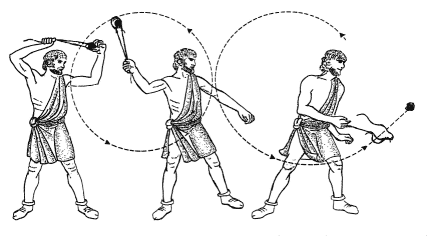
Archaeology confirms that slingstones were among the most important weapons in an ancient army's arsenal.

from Khirbet el-Maqatir (West Bank, Israel)
At one excavation site in Israel (Khirbet el-Maqatir, 10 miles north of Jerusalem in Israel's West Bank), slingstones have been found in almost every area of the dig. These stones don't talk, but they do tell tales about the people who once lived there.
“After three seasons of excavation, we have found nearly three dozen slingstones. Most are roughly round and slightly over two inches in diameter, from the size of a billiard ball to a tennis ball.”
—the Khirbet el-Maqatir dig director, archaeologist Dr. Bryant Wood (Associates for Biblical Research)
Not naturally rounded, they all have evidence of tooling. Their size and shape suggest an early period in the Land of Israel’s history. Larger slingstones, such as these, were generally used in this region prior to the Greek period (late 4th century BC).
The art of slinging stones

It is unclear when men first started slinging stones instead of throwing them. Yet, once known, it did not take long to learn that stones could be slung faster, farther, and more accurately, than they could be thrown. Early slingers also found smoother, rounded, stones were far more effective than any other shape. Ancient hand slings generally consisted of a single long strip of leather or woven wool, with a central “pocket” for the stone. The longer the sling, the greater its range. Long-range slings were about 3 feet long.
“Slingers are often visualized as releasing overhead, yet the best way to utilize a sling is by an underhand motion, like a softball pitcher,” said Grace Kellner, Artifacts Registrar of the Khirbet el-Maqatir excavation. “Elaborate wind-ups were wasted motion. One windup, like a good softball pitcher, was sufficient.”
One end of the sling was secured to the fingers of the throwing hand. The other end, held between thumb and forefinger, was released thus propelling the stone. Before development of the modern compound bow, ancient slingers were as effective as archers and served as an important contingent of any military force. Greek slingers were among the lightly armed troops (peltast), whose ranks also included archers and javelin throwers.
The heavy infantryman (hoplite), armed for hand-to-hand combat, was considered most honorable by the ancients. Yet, the light infantry was critical to military success. Peltasts initiated battles with their shower of arrows, javelins and slingstones. They also provided cover for the heavy infantry's retreat.
Stoned to death
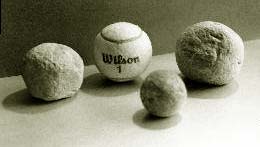
Surprisingly, a good slinger hurled a stone as far and accurately as a good archer. Roman military texts recommended archery target practice at about 200 yards. Slingers are known to hurl their projectiles even farther, as much as 440 yards (quarter of a mile).
As for accuracy, one ancient writer noted that the best slingers “would wound not merely the heads of their enemies but any part of the face at which they might have aimed.” Experiments demonstrate that missiles leave a sling in excess of 60 miles per hour. One Roman writer noted that opponents in leather armor were in far greater danger from sling missiles than arrows. Even if the stone did not penetrate the armor, it was capable of inflicting a fatal internal injury.
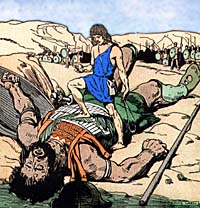
Unarmored bodies were easily penetrated by sling stones. In his classic medical treatise, Celsus included instructions for extracting lead and stone sling missiles from the bodies of wounded soldiers.
While typical slingstones used by the Greek and Roman armies were the size of golf balls, different cultures appreciated different sizes. In fact, at some ancient Greek and Roman battle sites, archaeologists believe they can differentiate which slingstones were standard equipment for which army.
During all periods, it was important for an army's projectiles to be uniform in size and weight. Otherwise, a slinger would need to compensate with each toss. Each army standardized projectile size and shape for maximum accuracy, velocity and distance.
Not all slingstones were stones
Many slingstones from the Greek and Roman periods were not stone. Sun-dried pottery and lead both allowed maximum weight within minimum dimensions. Lead ballistae from the Classic period were often manufactured with inscriptions on their surface. Government-issued Greek and Roman munitions were frequently inscribed with the name of the slinger's military formation or commanding general. Other inscriptions were more creative. “Take this,” “Ouch,” and even “For Pompey's backside,” added insult to injury.
All the Khirbet el-Maqatir ballistae were made of stone and none were inscribed. Naturally-rounded flint nodules were further tooled to finished form. Apparently from pre-classical periods, they average slightly over two inches in diameter and nine ounces in weight. Only one was not a flint nodule.
Other uses for slingstones
Although slingstones are exciting artifacts, some possibly had other uses. “We can not assume that every stone we call a slingstone was used for just that purpose,” said Kellner. “This was especially true in the Bronze and Iron Ages (Canaanite and Israelite periods of the Old Testament). Rounded stones were regularly used as common kitchen pounders and grinders for grinding grain and vegetables, crushing nuts, and even smashing bone marrow and roots in food preparation,” she added.
“Still, the widespread presence of so many slingstones suggests a battle was fought here during the Bronze Age,” said Wood.
Just a stone's throw away
Interestingly, the site is located in the territory allotted to the tribe of Benjamin. This tribe was known for an elite corps of slingers (Judges 20:15-16; 1 Chronicles 12:2), many of whom were left-handed slingers. That was unusual in the ancient Near East, noted Kellner. “While David was the best-known slinger in the Bible, I suppose when you wanted a job done right, you got a left-handed Benjaminite.”
For further reading
- M. Korfmann, “The Sling as a Weapon,” Scientific American 229.4 (1973), pp. 36-42.
- H. Shanks, “Destruction of Judean Fortress Portrayed in Dramatic Eighth Century B.C. Pictures,” Biblical Archaeology Review 10.2 (1984), pp. 48-65.
More Information
- stoning
- armor
- helmet
- armory
- stone
- rock
- war
- Bible archaeology
- David and Goliath coloring page
- Goliath
Text copyright © 1998, 2002, Associates for Biblical Research, All Rights Reserved—except as noted on attached “Usage and Copyright” page that grants ChristianAnswers.Net users generous rights for putting this page to work in their homes, personal witnessing, churches and schools.
